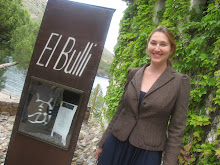
I’ve always liked meat: fried chicken, smothered pork chops with onion gravy over rice and on special occasions, grilled steak. Throughout my childhood, every few weeks when the weather was warm – quite often in the south – my grandfather ignited the outdoor grill, patiently letting the charcoal turn ash-white. Rib-eyes were the cut of choice. Smells of seared meat, edges charred, and of fat rendering, causing the occasional sizzle of a flare-up, are forever ingrained as a favorite childhood food memory.
But more recently, I haven’t found the act of eating meat as innocent and unadulterated as it was 25 years ago. The more I read about inhumane conditions, disease and other unappetizing information, the more I prefer members of the plant kingdom. That is, until I tasted Chianina beef and visited a cattle farm in Tuscany.
This particular breed, little known in mainstream U.S., is a tall, majestic, yet skittish animal. Their pristine white coats dot the rolling green hills, with the occasional black and white Friesian dairy cow tucked in to act as a wet-nurse. I found it a charming solution for an animal bred for its meat, not always able to produce enough milk for her calves. This was the first indicator of the care and thought that goes into raising them. My guess is that the alternative is some sort of bottle-fed artificial formula.
Other than my group’s guide, there were no people on this farm. It occurred to me that in the case of this product, the quality depends on lack of human intervention. The cows are left alone to do what cows do best. They are free to nibble on grass when the mood strikes, or if they prefer a little shelter, can wander indoors.
The bistecca fiorentina, a massive t-bone steak also known as the porterhouse, serves several people, weighing in at around 1 ¾ pounds. Cooked over extremely high heat, the outside of the meat was crisp, browned with cross hatch marks from the searing-hot grill. The inside stayed rare, almost raw in the very center, yet warmed through. Sliced into manageable strips and arranged nestled next to the t-bone on a platter, the meat was served with sides of sautéed spinach and roasted potatoes. Seasoned simply with coarse sea salt, the gentle crunch quickly dissolved in my mouth, enhancing the flavor of the meat. The rosy lean cross section had no visible marbling yet I didn’t miss it. Each satisfying bite was firm, succulent and tender, with pink juices pooling onto my plate. Some beef requires laborious chewing- this Chianina didn’t. Its flavor was, well meaty, but that of a clean, fresh and healthy taste. It just felt right. Unlike the character-rich meat of the Tuscan Chianina, the majority of beef on the U.S. market is slightly sweet from a lifelong diet of corn, with a forgettable, overall blandness.
I’d always imagined that there were meat-eaters and vegetarians of varying degrees: those who eat fish and chicken, those no flesh at all, and then there are the vegans. What was most surprising about this farm visit was that I didn’t feel turned off or guilty about wanting to continue to eat meat. It forced me to focus less on whether or not to continue eating meat, but instead to think about what kind of meat to eat. The industrial Parma pig farms that cram piglets into tight, indoor spaces, trim their tails, and treat them like commodities are a turnoff. Yes, their little pink newborn bottoms are tattooed with a number indicating the farm in which they are raised, but in this instance traceability doesn’t indicate how they are raised.
To paraphrase Carlo Petrini, the founder of Slow Food, food that is produced in an unclean and unfair manner doesn’t taste good. It can’t. So whether it’s due to the moral dilemma or my preference for lean, flavorful grass-fed beef, I now know which choice I’ll make next time I crave a steak. I have the Chianina to thank.

No comments:
Post a Comment